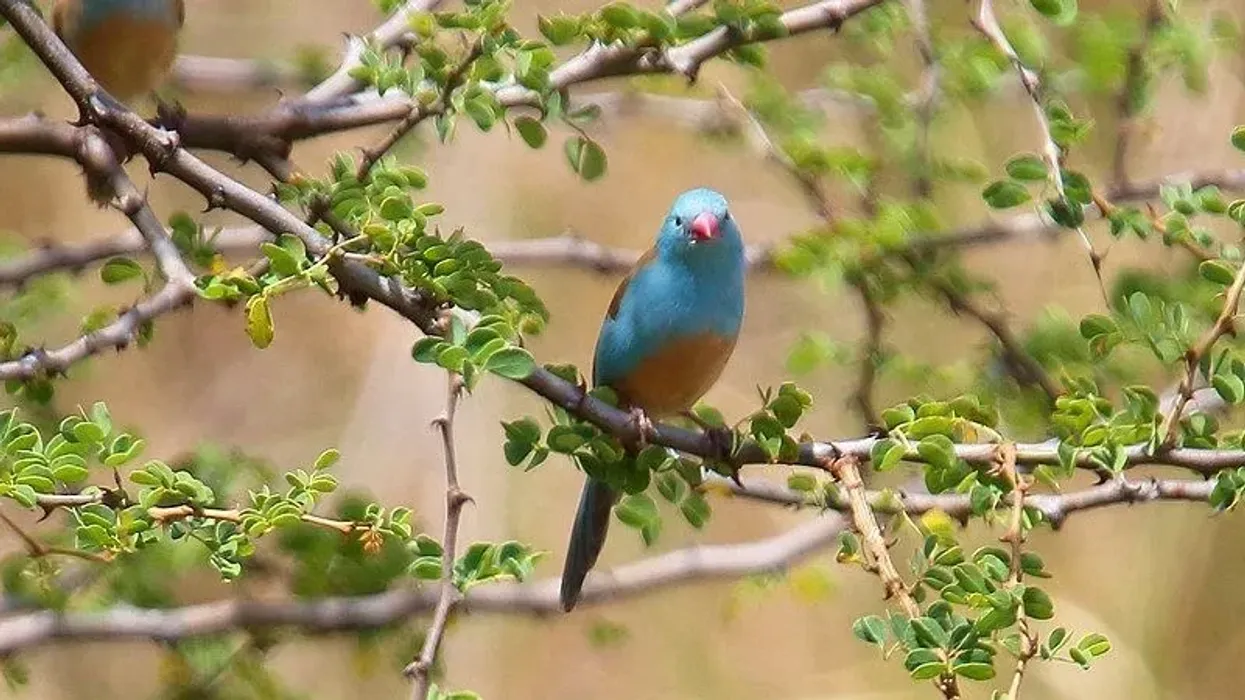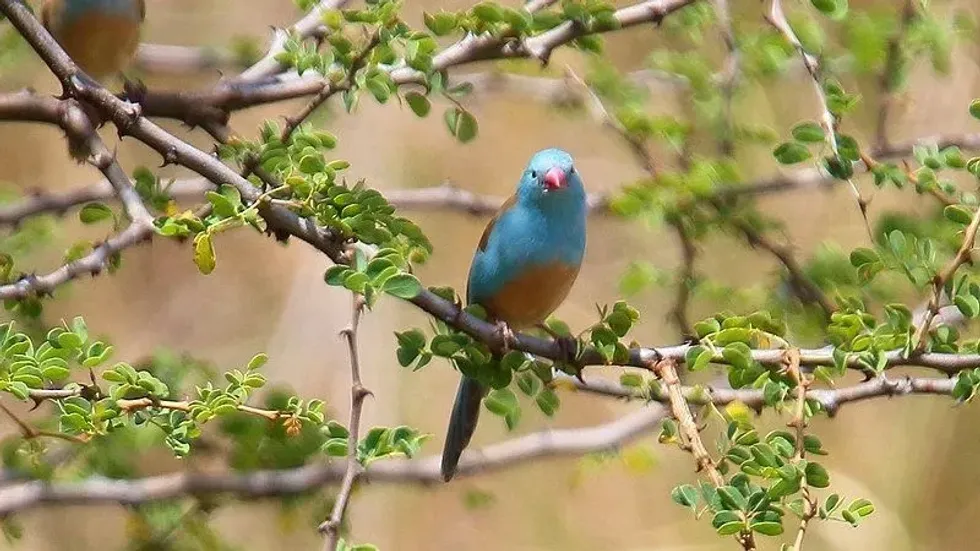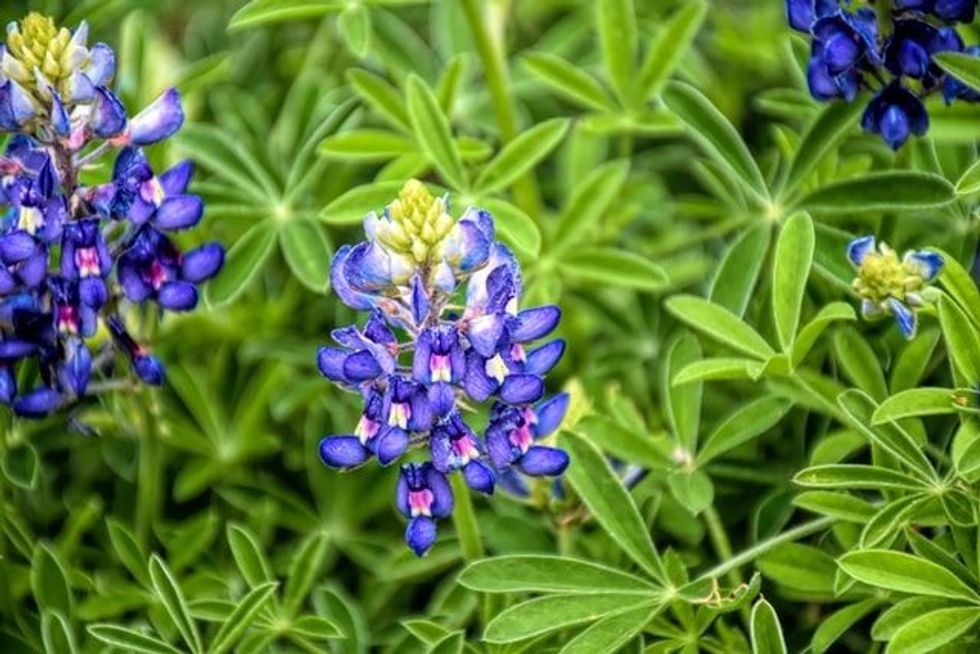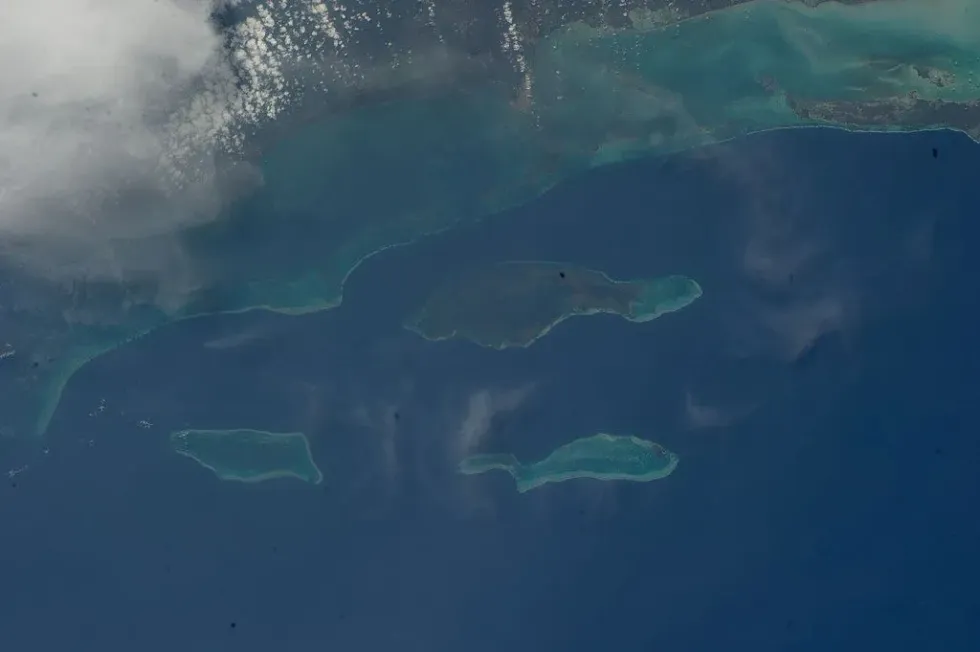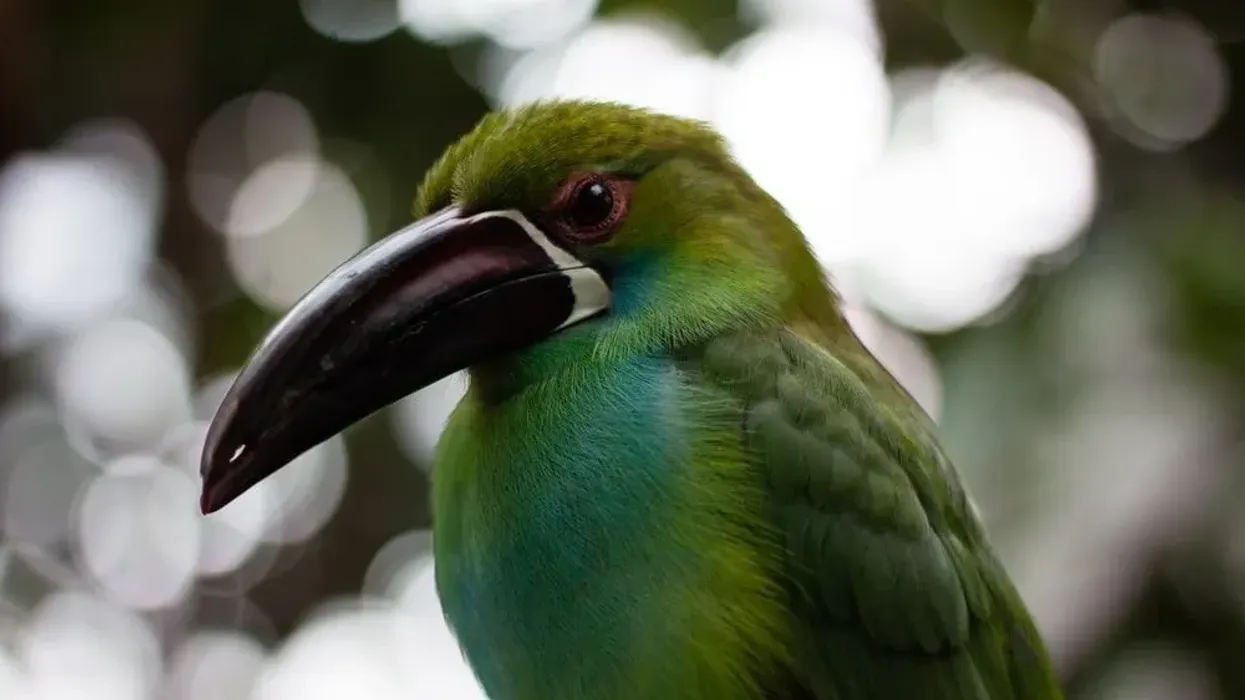Do you like finch birds like the purple finch? Then we have all the information on the blue-capped cordon-bleu finch. These birds are extremely charming and colorful.
They have a beautiful blue body with patches of buffy-fawn, and shades of light brown here and there. The males and females show sexual dimorphism as the females are slightly duller than the males in color. These birds are endemic to East Africa.
They are only found in parts of Tanzania, Kenya, Ethiopia, Somalia, Uganda, and Sudan. The breeding season for these birds also differs according to their geographical range.
The nesting behavior varies between individual birds as well. Some birds make nests of their own and some occupy old ones left by other species of birds. Their diet is omnivorous as they eat both plant material and insects.
Read on to know more about blue-capped cordon-bleu finches. For more relatable content, check out these blue grosbeak facts and palm cockatoo facts for kids.
Blue-Capped Cordon-Bleu Interesting Facts
What type of animal is a blue-capped cordon-bleu?
The blue-capped cordon-bleu (Uraeginthus cyanocephalus) is a species of bird.
What class of animal does a blue-capped cordon-bleu belong to?
The blue-capped cordon-bleu finch belongs to the family Estrildidae and class Aves of animals.
How many blue-capped cordon-bleus are there in the world?
The exact population of blue-capped cordon-bleu finches is not known. However, they are known to be common in their habitat and the population trend of these birds shows to be stable.
Where does a blue-capped cordon-bleu live?
The population of this species is not widely spread and this bird is endemic to East Africa. They can be seen in north and central Tanzania, Kenya, south Ethiopia, south Somalia, east Uganda, and southeast Sudan.
What is a blue-capped cordon-bleu's habitat?
These finches can be found mainly in semi-arid, arid, semi-desert habitats. They live in Acacia savannah with thick thornbush scrubs and thickets.
These birds live only in lowlands, up to a height of about 4264 ft (1.3 km) in Kenya. Some feral birds have even been seen to breed in suburban Nairobi up to an elevation of 5413 ft (1.65 km).
Who does the blue-capped cordon-bleu live with?
Blue-capped cordon-bleu finches are known to live alongside species like blue waxbills (Uraeginthus angolensis) and red-cheeked cordon-bleus (Uraeginthus bengalus). During the breeding season and for foraging, they form pairs. When foraging, at times small groups can also be seen.
How long does a blue-capped cordon-bleu live?
The exact lifespan of this finch is not known. However, other birds of the same genus Uraeginthus and family Estrildidae like blue waxbills (Uraeginthus angolensis) and red-cheeked cordon-bleus (Uraeginthus bengalus) are known to live for about seven to nine years.
How do they reproduce?
The breeding season for the blue-capped cordon-bleu finch differs according to its geographical range. In Tanzania, it occurs around November to June, in Somalia, around May to June, and in Kenya, during the rainy seasons.
The courtship behavior includes the male holding the tip of a feather in its beak with its head raised, moving its head up and down moves towards the female, and then starting to bounce up and down. The same behavior can be seen in blue waxbills (Uraeginthus angolensis).
At times the males and females build their nests and other times, they become brood parasites and occupy buffalo weaver nests or Ploceus weaver nests. The female lays about four to six eggs and the incubation period is around 13-14 days.
The chicks fledge at a young age and can feed by themselves at only seven days old. They become fully independent at around 14 days old. However, the nestling period is around 17-19 days.
What is their conservation status?
The conservation status of this finch bird species, according to the International Union for Conservation of Nature, is listed as Least Concern. Their population is not facing any serios threat, so it seems to be stable currently.
Blue-Capped Cordon-Bleu Fun Facts
What does the blue-capped cordon-bleu look like?
The blue-capped cordon-bleu finch is a medium-sized bird with an overall blue appearance. The flanks and upper head to the mantle of males are azure blue in color. The upper wing and back are tawny brown in color.
Undertail-coverts, belly, and upper breast are buffy-fawn to gray in color. The rear side of the belly is whitish. They have a pinkish bill with a black tip at times.
Their eyes are brown to red and eye-rings are pale bluish-gray in color. The females are a bit duller in comparison. They have a brown to grayish-blue crown, the ventral side is brownish-buff,and the center of the belly to the rear is white.
How cute are they?
These finches can be considered pretty cute due to their beautiful colors. They are also not naturally aggressive which definitely adds to their charm.
How do they communicate?
These finches communicate with the help of different songs. Every individual male sings different songs, while the songs of females are short. Their nest call sounds like 'chee-chee', alarm call sounds like a sharp 'tchek', and contact call sounds are a thin 'tsee', the same as blue waxbills but harsher.
How big is a blue-capped cordon-bleu?
The blue-capped cordon-bleu finch grows to around 5.1-5.3 in (13-13.5 cm) in length. They are slightly smaller than western bluebirds which are about 6.3-7.5 in (16-19 cm) in length.
How fast can a blue-capped cordon-bleu fly?
The exact speed at which these finches fly is not known. However, they are known to fly at a moderate pace.
How much does a blue-capped cordon-bleu weigh?
The blue-capped cordon-bleu finch weighs about 0.3-0.4 oz (8.5-10.8 g).
What are the male and female names of the species?
Males of this species are known as cocks and females of this species are known as hens.
What would you call a baby blue-capped cordon-bleu?
A baby blue-capped cordon-bleu finch is called a chick or hatchling.
What do they eat?
The diet of these birds is omnivorous. Their diet primarily consists of small seeds, but occasionally they also include small insects, like termites, to their diet.
Are they dangerous?
These birds are not dangerous or aggressive at all. Many people keep them as pets at home. However, you need to make sure they don't get bored as they might start to become aggressive.
Would they make a good pet?
Blue-capped cordon-bleus, like Gouldian finches and many other finches in the Estrildidae family, make excellent pets. They can get along with birds of their own species as well as other species. The best option would be to keep them in large indoor aviaries because, in the winter, they require external heat.
Did you know...
Under the Uraeginthus genus of the Estrildidae family, there are only three species of birds including blue-capped cordon-bleus. The other two are blue waxbills (Uraeginthus angolensis) and red-cheeked cordon-bleus (Uraeginthus bengalus).
Most characteristics of the three species are the same other than few things in their appearance. For blue waxbills, the crown is not blue, unlike blue-capped cordon bleus. The red-cheeked cordon-bleu has a similar appearance to a blue waxbill, but males of the red-cheeked cordon-bleu species have red patches on the sides of their faces.
How many eggs do blue-capped cordon-bleu lay?
A female blue-capped cordon-bleu bird lays around four to six eggs.

